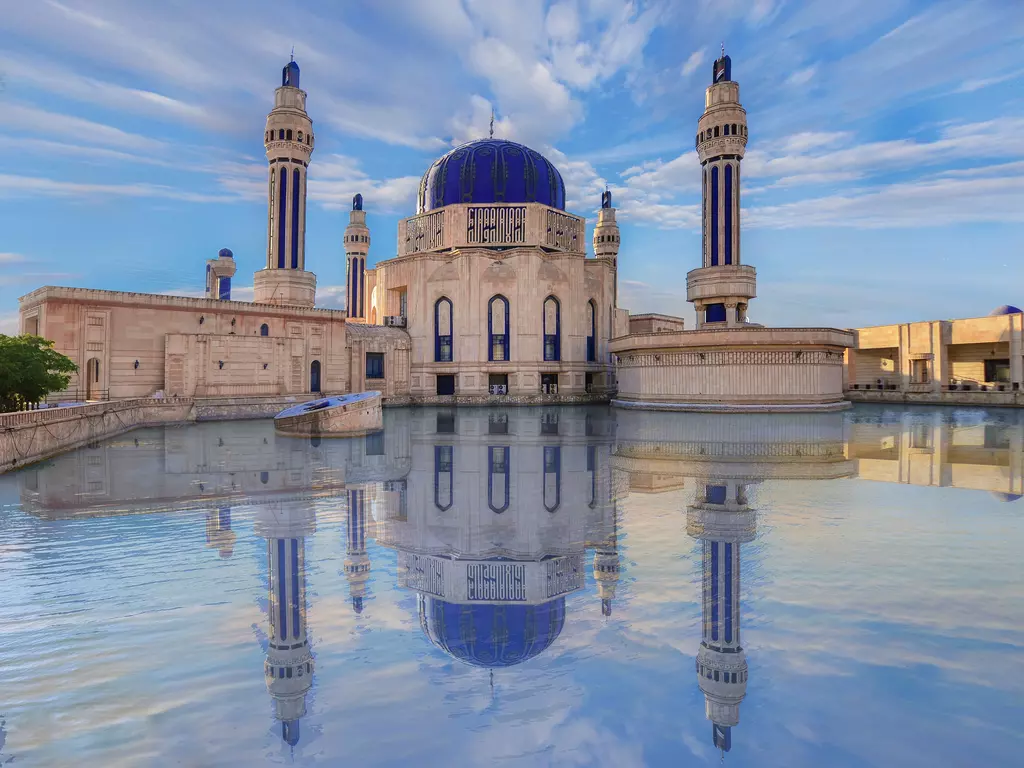Umm al-Qura Mosque

- The Umm Al-Qura Mosque in Baghdad, Iraq, is one of the most prominent and architecturally striking mosques in the city. Originally built in the late 1990s, the mosque was commissioned by Saddam Hussein’s government and was intended to serve as a grand symbol of Iraq’s religious and national identity. The name "Umm Al-Qura" translates to "Mother of All Cities," a term often used to refer to Mecca, highlighting the mosque’s significance in Iraq’s Islamic heritage. Over the years, it has remained an important site for religious gatherings, prayers, and national events.
- The mosque's architecture is a blend of traditional Islamic and modern designs, featuring a massive central dome, towering minarets, and intricate Arabic calligraphy. One of its most distinctive features is the blue-tiled minarets, which stand tall against Baghdad’s skyline. The interior of the mosque is equally impressive, with ornate chandeliers, marble floors, and beautifully decorated mihrabs (prayer niches). The mosque was originally designed to be a national landmark and was used for important government ceremonies and religious events.
- Following the 2003 Iraq War, the mosque underwent changes in its role and significance. Initially associated with Saddam Hussein’s regime, the Umm Al-Qura Mosque was later repurposed as the headquarters for the Association of Muslim Scholars, a Sunni Islamic organization. Since then, the mosque has continued to serve as a place of worship and a center for religious and social activities, with Friday prayers and sermons often drawing large congregations.
- Despite Baghdad’s turbulent history, the Umm Al-Qura Mosque remains a symbol of Iraq’s religious and architectural heritage. Its grandeur and significance continue to attract both worshippers and visitors interested in the city’s Islamic landmarks. Today, the mosque stands as a reminder of Iraq’s rich cultural and religious traditions, reflecting both its historical past and its evolving present.
